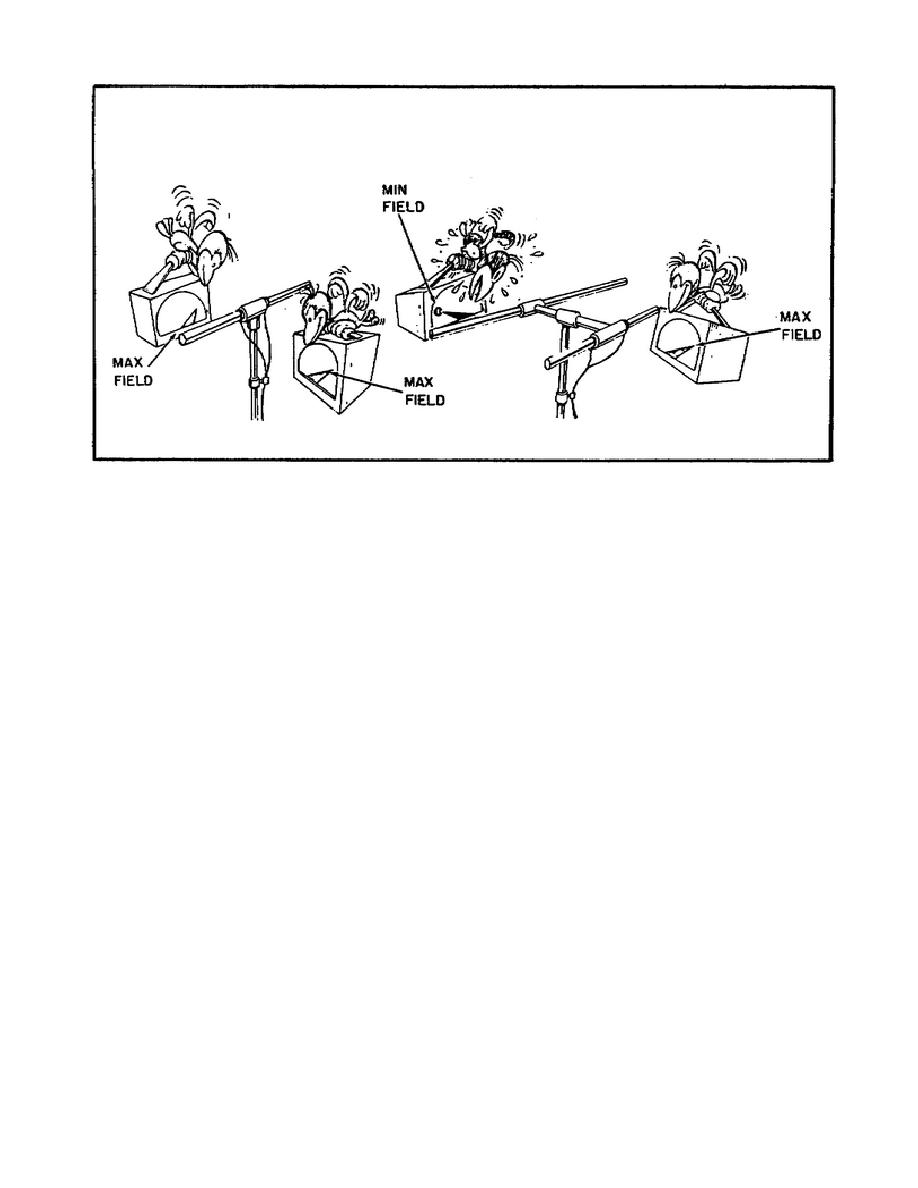
Figure 138.
Measuring the Power Gain of a
Directive Antenna.
b. In other words, if you have two antennas with an equal amount of
power coupled to each one, you get more radiated power from the directional
antenna than from the nondirectional one. You can see then why we say that
an antenna with either a director or reflector has a power gain compared to
a simple dipole. Actually, an antenna with either a director or reflector
has a gain of about two over a single element dipole. A YAGI antenna has a
gain of about five.
13. Summarizing main points so far.
a. An antenna is a conductor or system of conductors that radiates and
receives electromagnetic energy.
b. A good transmitting antenna is also a good receiving antenna.
c. Most radar sets use the same antenna to radiate energy from the
transmitter, then pick up echoes of this energy, and direct the echoes to
the receiver.
d. A simple dipole antenna consists of two quarter-wave conductors and
is nondirectional.
e. Adding a reflector makes the dipole antenna directional.
f. A YAGI antenna consists of a driven element, at least one reflector,
and several directors.
g. A YAGI antenna radiates most of its energy in one direction and has
a gain of about five as compared to a simple dipole.
193



 Previous Page
Previous Page
